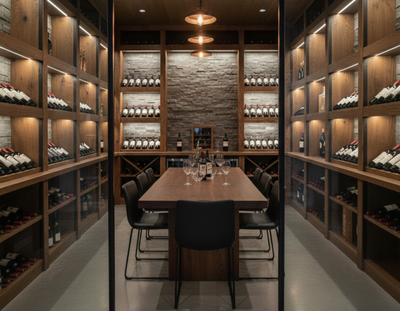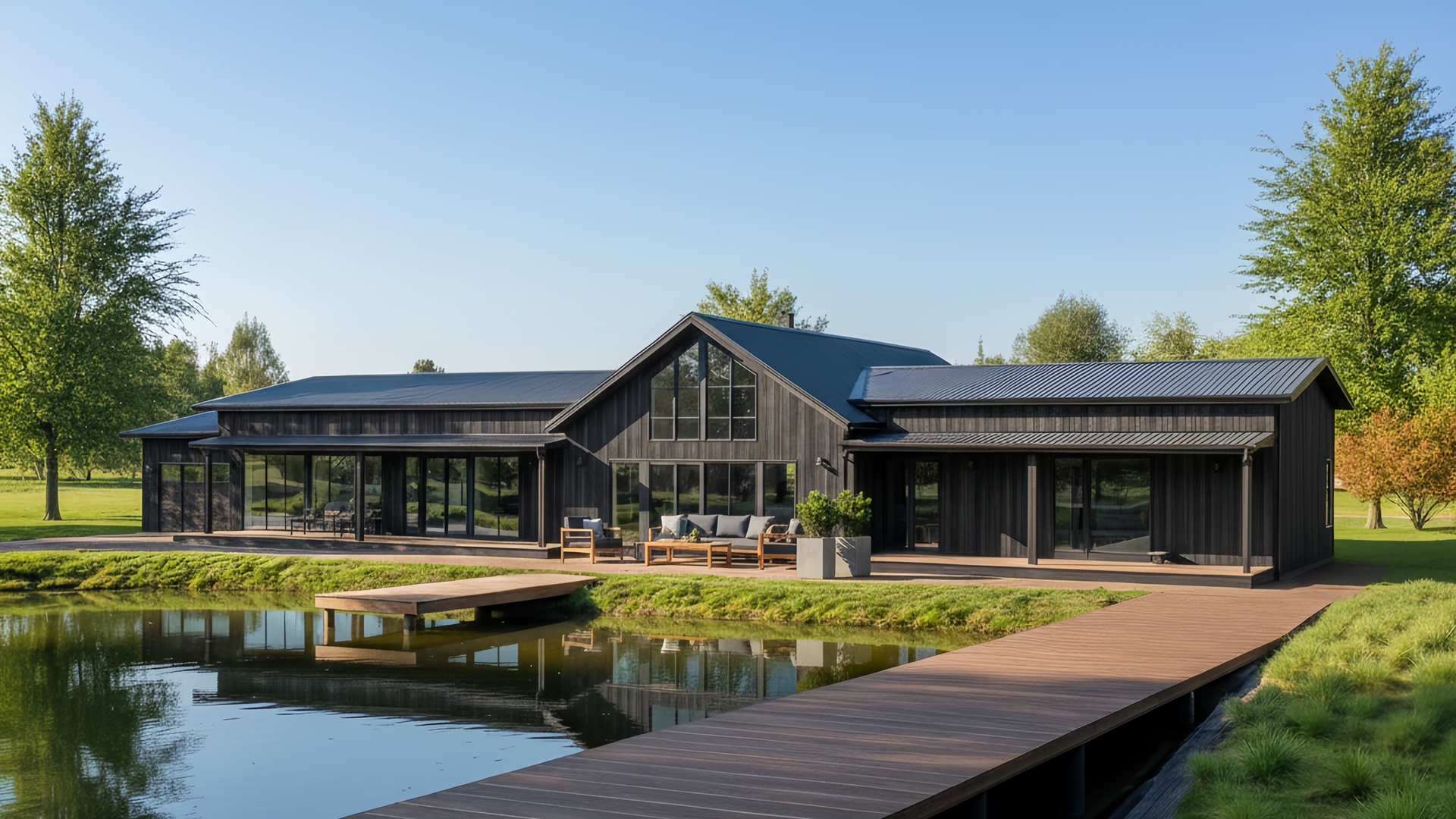When Luke Fryer boarded a plane to Texas, he wasn’t chasing BBQ or cowboy hats. The former Metricon executive and founder of Longhorn was chasing an idea – a radical rethink of how Australians build homes. What he found were “Barndominiums”: vast, steel-framed ranch-style houses with soaring ceilings, stone fireplaces, and panoramic glass that […]
Now, Fryer wants to roll them out “everywhere from Darwin to Launceston and over to Broome”. His claim? They’re faster, cheaper, and better suited to the Australian landscape than the houses we’ve been building for decades.
What Exactly Is a Barndominium?
The name might sound odd, but in the US it’s already a movement. Barndominiums are oversized steel-framed homes with cathedral-like spaces, often wrapped in rustic finishes. Think: eight-to-twelve-metre-high ceilings, expansive verandas, off-grid capability, and living spaces big enough for a family gathering, a wedding, or just a fire-lit evening overlooking the paddocks.
Longhorn’s designs come with American names – the Oklahoma, the Wyoming, the Minnesota – but Fryer insists they belong in Australia. With floor-to-ceiling glass looking out to ridgelines and valleys, he argues they’re built for our rugged countryside as much as Texan plains.
“These homes capitalise on what Australia has in abundance – land, views, and lifestyle,” Fryer says. “But right now, there’s no real product in our market that does that justice.”
Price Tag: From $700k to $2.3m
The entry point for a basic model is around $700,000, with high-spec versions running to $2.3 million. Fryer claims that’s up to 10% cheaper than most comparable builds in regional Australia, while offering sizes between 450 and 730 square metres.
Crucially, they’re designed for rural blocks – often off-grid. Packages include solar, water storage, and sewage treatment systems, giving farmers and regional buyers a house that works independently of town supply.
That raises a big question: is this a solution to housing affordability, or just a premium product for cashed-up buyers chasing lifestyle acreage?
Faster – But Not Texas Fast
In Texas, Fryer saw homes go up in 150 days. In Australia, a similar home can take 10–11 months. He doesn’t pretend we’ll catch up with US timelines – labour shortages make that impossible. But with dedicated Barndominium build teams, Longhorn is targeting six months.
That means consecutive work streams rather than waiting weeks for the next trade to arrive. It’s not radical technology – just tighter scheduling – but Fryer says it could be a step towards faster delivery in an industry crying out for innovation.
Read full The Good Builder article here: https://bit.ly/4mWev5p

.png)




.png)

.png)





%201%20(1).svg)
%201.svg)
%20(1).png)
